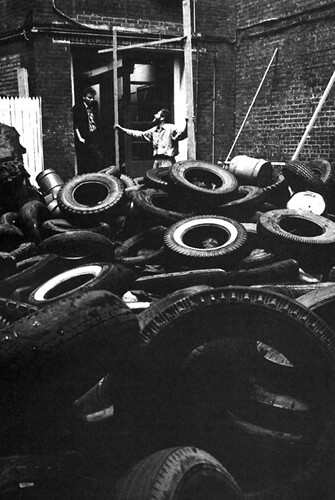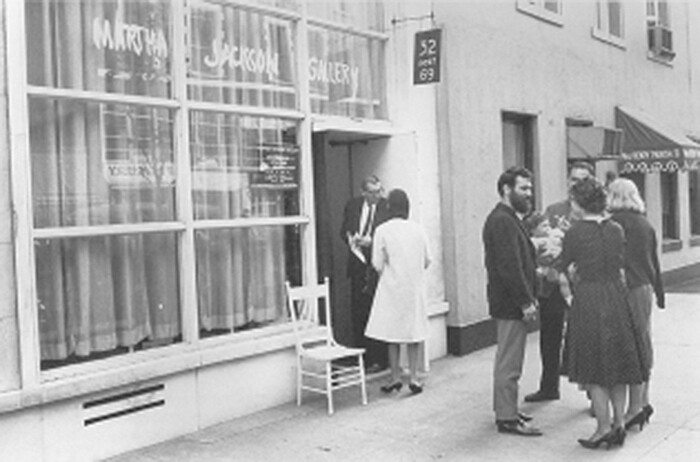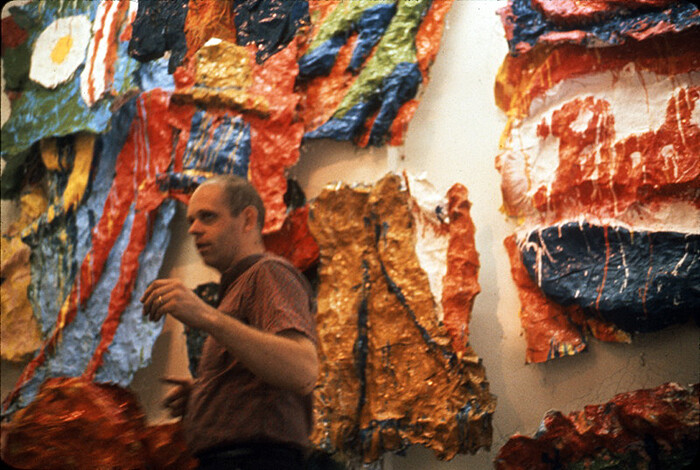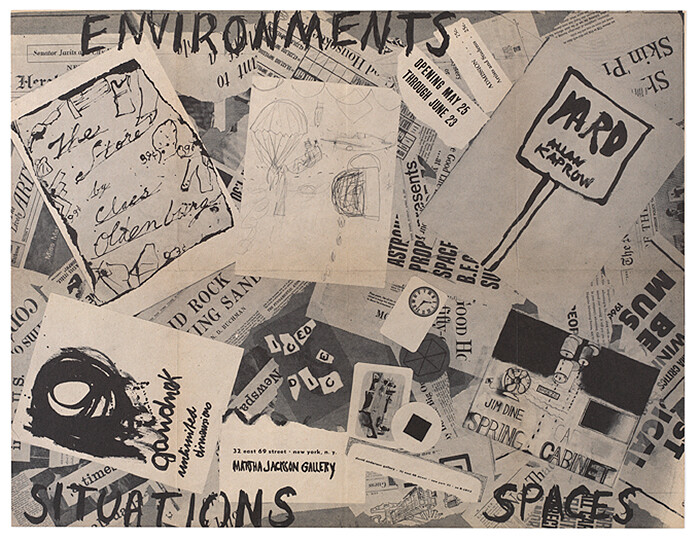The critic, Jill Johnston once archly observed, is “one who practices the ART of criticism.” Johnston honed her skills through deep immersion in the New York scene of the 1960s, as a dance critic and later columnist for the Village Voice, and subsequently as a contributor to Art News, Art in America, and The New York Review of Books. Her brief, punchy reviews document an art that had not yet acquired a descriptive language, giving words to events that required a new sort of prose. Her writing style was intuitively suited to the task—an easy, fluid stream of consciousness; a direct response to things seen and felt; an informed, authoritative voice that could be funny, disparaging, and provocative in turns. More than a historic document of incredible immediacy, her work offers a model of art writing that recognizes its own stakes in creative production.
—Media Farzin
“Environments” at Martha Jackson’s
The “terrible children” invaded Martha Jackson’s Gallery last May and June with more of those baffling noncommercial commodities, things you can’t use or sell or label even, which nobody could be too clear about why they should be encouraged or endured much less considered the prestige items they obviously are, or else why would Miss Jackson (whose commercial acumen is well known) clutter up her fashionable yard with a bunch of junky car tires that she permitted Allan Kaprow to put there?
I don’t know what Miss Jackson thought about those tires. I didn’t think much myself, I mean I perceived a bunch of tires there in the yard and then asked my son if he wanted to stay and play around in them while I went upstairs to see the rest. I know Mr. Kaprow is against people finding dark serious meanings, commentaries on the state of the union, etc., in these situations, and I agree, there seems no pressing reason to find anything other than what you see; in fact the cultural references are usually a dodge and a distraction right off, a way of trying to account for what seems incomprehensible—how, say, Art and a mess of old tires could possibly be related. (And I don’t mean to imply that they are, although they might be.)
Well, this was an unusual show. The gallery put out a fine brochure, tall and thin, called “Environments, Situations, Spaces,” containing “statements” by each artist receded by their handsome autographs. George Brecht is always clean as a clipped wing, airy, cheerful, and self-disappearing. He has a little white room just off the yard with a nice white chair in it, comfortable for a Cape Cod porch and adjoining Jim Dine’s Spring Cabinet. Brecht’s autograph in the brochure is an inch wide. His first two statements are: a. nothing-special; b. no theory.
Whereas Claes Oldenburg sears his page with a mud-luscious Whitmanesque catalogue of the materials of art, and for Oldenburg the list is inexhaustible because he is for an art that is everything, everything that is “that does something other than sit on its ass in a museum,” and preferably everything that is not self-consciously refined, in other words that is raw, quick, smelly, holy, many small “sweet and stupid” acts of ungracious side-splitting, nose-blowing living that are supposed to be left for keeps in dirty abandoned corners. Oldenburg’s Store has that unkempt look; the items hang in blobbish disregard for civilized order; the store articles are sculptured in relief with muslin strips dipped in plaster and placed over chicken wire, then painted with enamel to give the business a high dripping festive gloss.
These environments, situations, spaces are not going any place; they’re not on the market for immortality; they’re just not negotiable at all, except for tempting traffic with the eye and heart that is looking for more or less anything, or ready to stumble on something; and even that is saying too much, or too little, and no doubt Robert Whitman is right when he says that “this whole business has been complicated by people who say all smart things … “
—Jill Johnston
Originally published in Village Voice, 6 Jul. 1961, 13.



